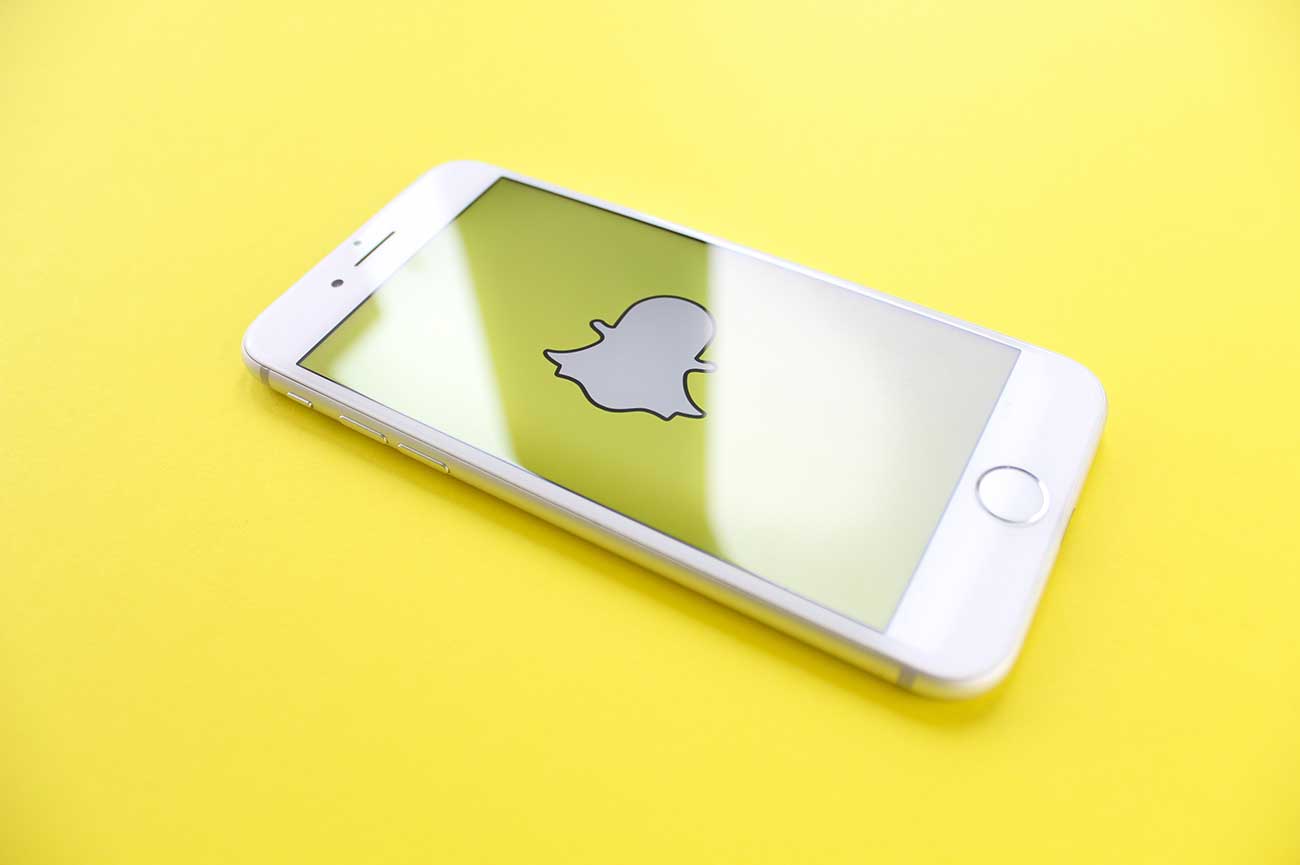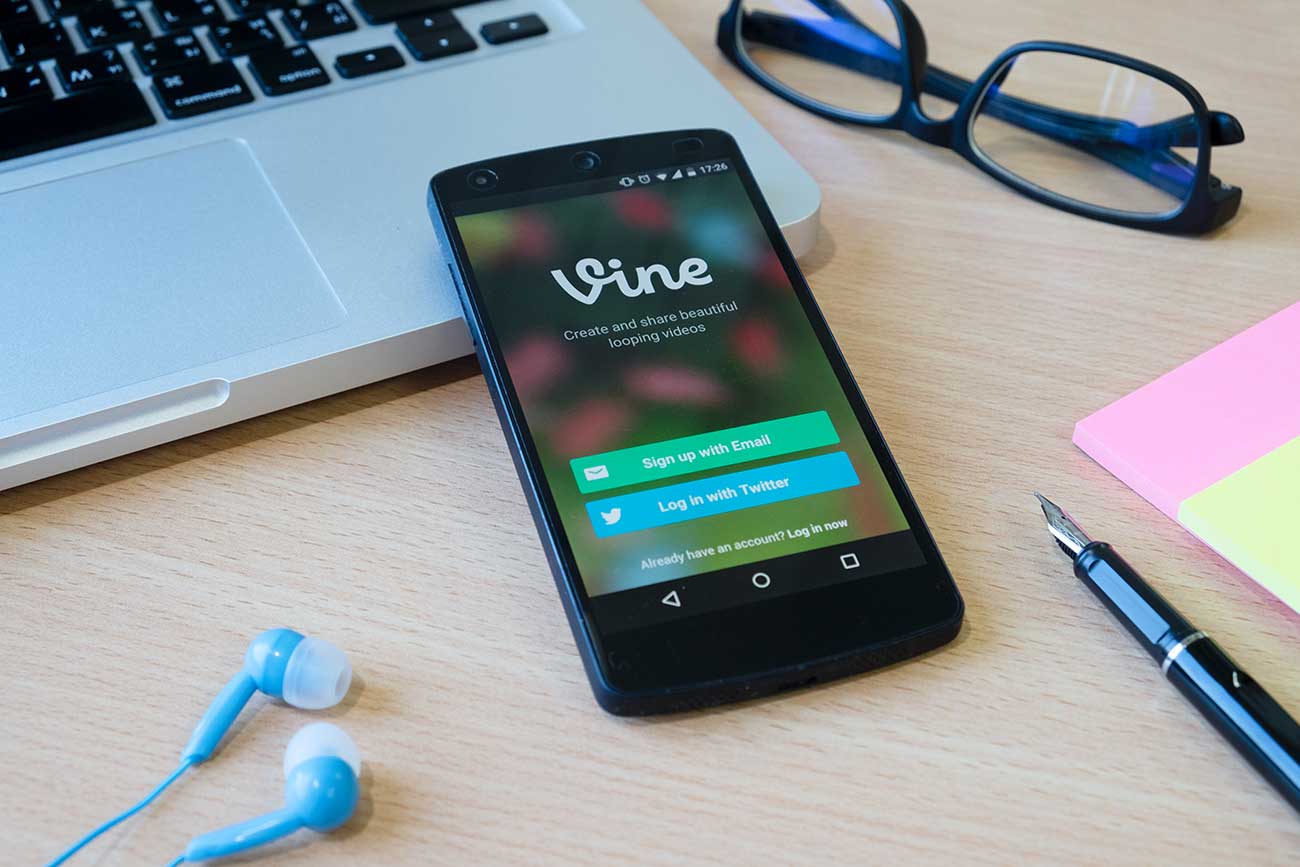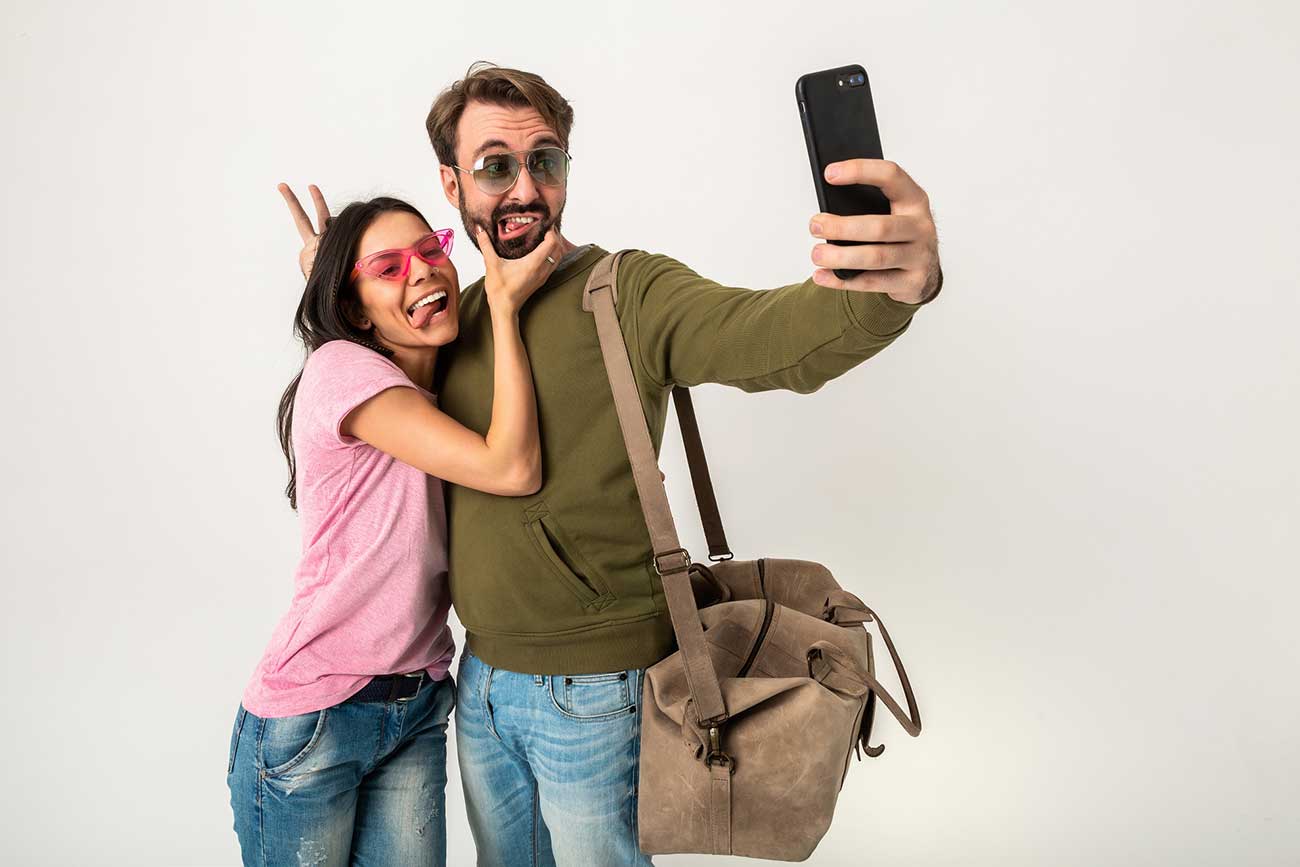
Everywhere you go, whether it’s in the physical world or online, vertical video is everywhere. It’s taken over. Just how did we end up here?
Look, the vertical video is nothing new here. The 9:16 ratio, though ugly (sorry but it is), has been around for a fair while. However, it’s now more than ever that vertical video is dominating. And not just vertical video, but short-form (one minute or less) ‘content’, as the cool kids like to say.
Everywhere you look people are consuming short-form vertical content on their phones, whether it’s on the far-reaching tentacles of TikTok or newer rivals such as Instagram Reels and YouTube Shorts. Everywhere you look there are an astonishing amount of adverts for TikTok. Every young person you know is on it. You can’t escape it. Perhaps, heaven forbid, you’ve even watched a few TikTok’s yourself? Just how did this all come about?
It started with Snapchat
Technically, it started with Apple’s landmark innovation - the very first iPhone. Little did they know (they probably did) that this first smartphone and the ecosystem of apps it would go on to create would change everything about our world. But for the sake of the word count and your attention span (which is continuously abused and withered away with daily social media use), the idea of vertical video first really took off with Snapchat.

Snapchat.
Initially released in 2011, the app was a huge hit among younger users (believe me, I was one of ‘em) with the idea that the photo or video you sent to your friends or whichever crush it was at the time would disappear shortly after. Probably for the best.
Through various iterations came ‘Snapchat Stories’ and other features where you could share your daily life and what you were up to. It was effectively the visual version of a Facebook status. ‘This is what I am having for dinner’...‘walking the dog’...‘can’t believe I lost at Fifa again’. Nobody should care. And yet they did.
The app’s popularity did not go unnoticed. Within a few years, Instagram was developing (stealing) their own version of stories and once that was released, the world never looked back. Nobody was turning their phones sideways to send a landscape shot. Everything was vertical because that’s simply how we held our smartphones. Vertical video became normal, astonishingly quickly. As we became glued to our smartphones it only made sense that the visuals we consumed on these devices were in a vertical format.
When you consider that the main aim of each social media platform is ultimately to keep us on their site for as long as possible so that they can serve up as many adverts as possible, you start to understand why. Marketing is how these huge companies make their money. We are the product that they’re selling.
So, whether it’s on an Instagram story or in the feed, the vertical format works best because it takes up far more of our screen. If you think of the smartphone screen as real estate, you want to utilise all of it. The bigger your piece of content is, the more likely it is to grab a user’s attention. Our beloved, traditional 16:9 landscape just didn’t quite work in this new era. Vertical won and everything was set for the next big step.

Musical.ly & TikTok
In 2014, an app known as ‘Musical.ly’ was released. Users could create harmless (and seemingly pointless) 15-second videos that featured songs that they lip synced to. For a long time, it was shrugged off as a lip-syncing, gimmicky little thing for teenagers. ‘And rightly so!’ I hear you shout. I don’t disagree but, this is the thing...the teenagers are the ones we should be paying attention to! It’s the younger generations who first picked up Snapchat and made it snowball. It’s the younger generations who A) do brilliantly at making me feeling increasingly old and out of touch and B) sit at the forefront of all big technology and cultural shifts.
Musical.ly did not go away. Eventually, it morphed into TikTok (same company, just a name change). The concept was refined and tweaked but essentially remained the same:
- Create vertical video 15 seconds - 1 minute long
- Add in pre-set filters, effects, songs
- Post and share to the world.
Now, it’s important to note that Musical.ly / TikTok was not the first to come up with and promote the idea of short-form videos. The popular app ‘Vine’ had great success between 2013 and 2017 before dying a rather sudden death when Twitter took over and mishandled their shiny new toy because they didn’t really know what to do with it. On Vine, the concept had been very similar in that videos could only be 6 seconds long! People couldn’t get enough of it.

Vine.
A BBC review of Vine described the videos as ‘mesmerizing’ - like they were ‘watching a bewildering carousel of six-second slices of ordinary life roll past’. Sounds a lot like TikTok, right? Clearly, the blueprint for success was there and TikTok took full advantage as Vine receded into obscurity. By July 2015 the app (still called Musical.ly at the time) was number one in the iOS app store, becoming the most downloaded free app in over 30 countries including the US, the UK, Germany, Brazil, Japan, Canada and...you get the picture.
Whatever your misgivings were about Musical.ly and TikTok during this period, it was clear that younger generations loved it. In some shape and form, short-form vertical video was here to stay.
Pandemic, meet algorithm
When it comes to figuring out exactly why vertical video has taken over, a huge factor comes down to the pandemic. Now, I know that there are competing theories about where Covid-19 originated from including transferring from bats to humans as well as the Wuhan lab-leak idea but hear me out on this: what if it was TikTok? When you investigate something like this, you need to look at who was set to benefit from such a thing as a worldwide pandemic and I struggle to think of anyone who’s done better than TikTok.
I jest of course, but you get the idea. Over the past year and a half, worldwide lockdowns forced whole nations indoors and everything aligned perfectly for an app like TikTok to really take off. Suddenly, billions of people were spending far more time online, staring at their smartphones. The groundwork and solid foundations had already been laid by TikTok and now, their app really exploded.
The success lay in the word I loathe. Algorithms. TikTok has done an exceptional job of creating an algorithm that knows exactly what you want to watch, feeding you an endless supply of videos. The first thing you’re greeted with when you open the app is a ‘for you’ page. Scrolling with your thumb, one video appears below another and on and on it goes…infinitely. Before you realise it, a moment browsing on your phone over breakfast turns into an hour or more of the day gone. With so many people bored and stuck indoors during lockdown, TikTok became the go-to app.
It was a place where anyone and everyone could share whatever they liked. In-depth storytelling and character development? Absolutely not. But cute puppies, silly dances, mesmerizing edits, hilarious comedy and everything in between, yes. It’s not hard to see how TikTok became a form of escapism for so many people around the world in such a dark, bleak time. Who can blame them for wanting to have a little scroll and take their minds off such depressing real-world issues by watching a man fall down the stairs and flawlessly transform into a banana (I’m still figuring out how he nailed the edit so damn well).
While platforms like Twitter, Instagram and YouTube have all slowly developed their algorithms over time, allowing them to become more assertive and more controlling over what they want us to watch, TikTok seems to be the most powerful, most well-engineered of the lot. It’s almost alive - bubbling and writhing, analysing every movement of your eye and thumb, throwing up more and more of what you want to see. And that’s what keeps so many hooked for so long.
Furthermore, what TikTok did so well is democratize the creative space. The constant need for content and the way the app has been engineered to ‘push’ creative challenges and trends (whether that’s a certain dance, the use of a certain song, a comedic pun or whatever else) means that the chances of going viral and your metrics rocketing were and still are pretty good, especially in comparison with competitors like Instagram. Love it or hate it, this appeals to a lot of people.
Building on this, TikTok also made it incredibly easy for just about anyone to get creative. All you need is a smartphone and you’re good to go. It is, at the very core, filmmaking with stabilisers. The parameters have been set with a time cap and you have everything you need from music tracks to SFX and plenty of visual filters and graphics too. Making something visual and having an audience watch it has never, ever been so easy. This ease and simplicity was like adding petrol to the fire, further fanning the flames of the app's success.

The knock on effect
Over the past year and a half as TikTok has skyrocketed to new heights, it’s become the top-dog in terms of cultural relevance. In fact, it now creates culture. The new generation of celebrities and musicians are being discovered and signed directly through their TikTok success - people you and I have never heard of. Just last week (as of writing), Ed Sheeran live-streamed a gig specifically for TikTok. The stage was designed specifically for vertical video and had all sorts of custom augmented reality effects. The performance pulled in 5.5million views and has spawned 709,900 TikTok videos created using his latest single ‘Bad Habits’.
Whatever you happen to make of Ed’s music, you have to take note. One of the world’s biggest musicians utilised this app to promote his latest release. Of course, Ed’s a smart guy. For several years now, TikTok has had a direct impact on music charts around the globe. Whatever songs were being used by kids on TikTok are the songs that top the charts. This app is defining culture and because of that, vertical video has become the dominant norm in so many aspects of our lives.
By now, you will of course be seeing the knock on effects of this crazy ‘vertical video’ boom. Instagram and its insecure, overbearing parent-company Facebook have taken note. They are now pushing ‘Instagram Reels’ very hard across their platform. When you scroll through your Instagram feed now, every other video is a Reel. Of course, Facebook has form with this having already stolen Snapchat’s idea of Stories.
Meanwhile, even YouTube is paying attention. This may have something to do with the fact that users are now spending more time on TikTok than they are on YouTube. That’s just not good for the bottom line, is it? So, they’ve gone ahead and are now pushing ‘YouTube shorts’ across the platform. Once again, it’s an endless scroll of short, vertical videos one after the other...TikTok, but not TikTok.
The future
Much like Covid-19, this vertical video boom has spread around the globe and it shows no sign of slowing down. Whatever you or I think about it, vertical video is here to stay and it is changing the game completely, ripping up every guidebook we ever wrote or read. But will it last?
I look at this way: people are never going to go to the cinema to watch a huge vertical screen (perhaps a weird offshoot cult from Silicon Valley but honestly, it will never be mainstream). Vertical video is a smartphone phenomenon. Right now, smartphones are what we use every day and how we are consuming a large majority of films and videos. But technology is always evolving.
If social media has taught me anything over the past decade, it’s that things change incredibly fast. What works today won’t necessarily do so tomorrow. The big boys of Facebook, Google and TikTok know this well. So perhaps, in 20 or 30 years from now when we have AI chips implanted in our skulls, we’ll be viewing things in landscape once again…
Tags: Production Featured Long read



Comments